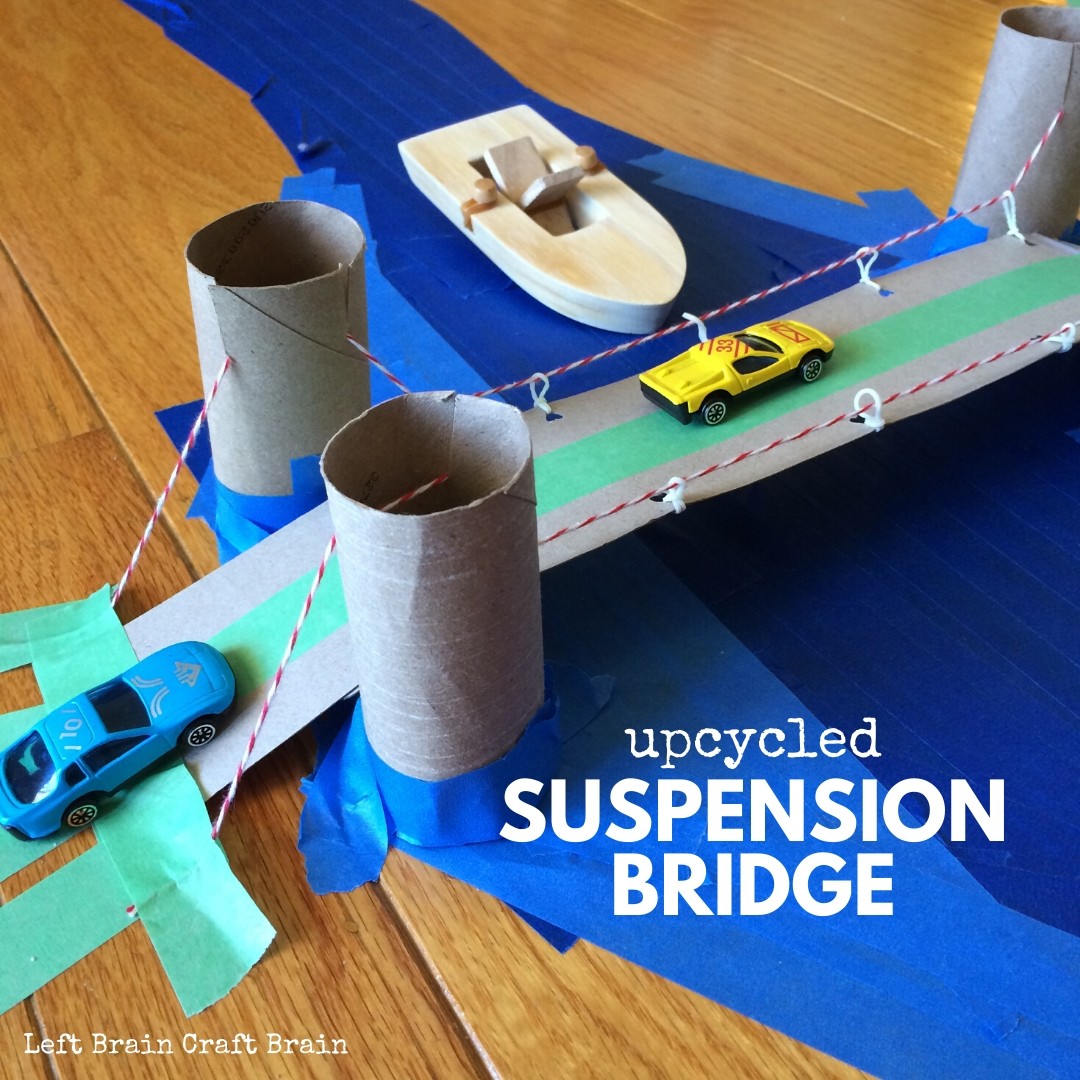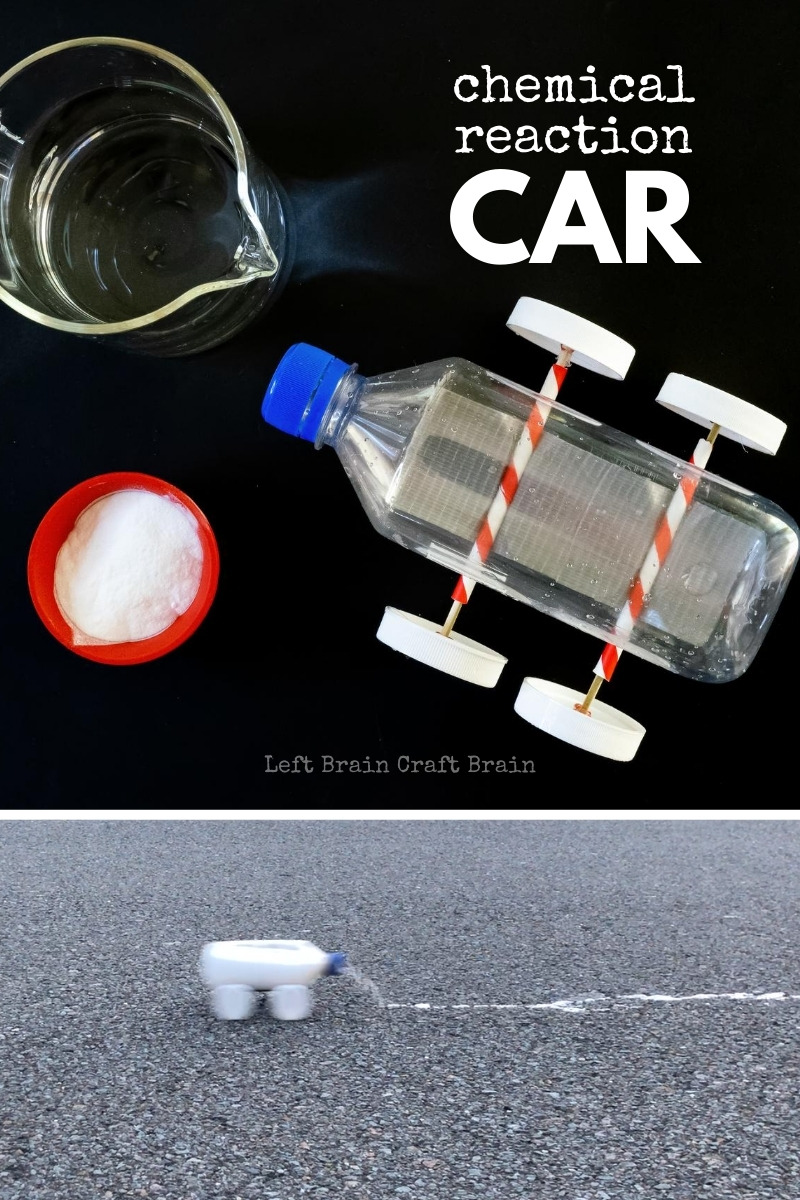Get ready for one of the most fun STEAM projects out there! This upcycled Chemical Reaction Car gets its boost from a fizzy chemical reaction! It’s perfect for after-school learning with an exciting spin or scouts or maker club at school. All you need is a few simple supplies to get rolling!
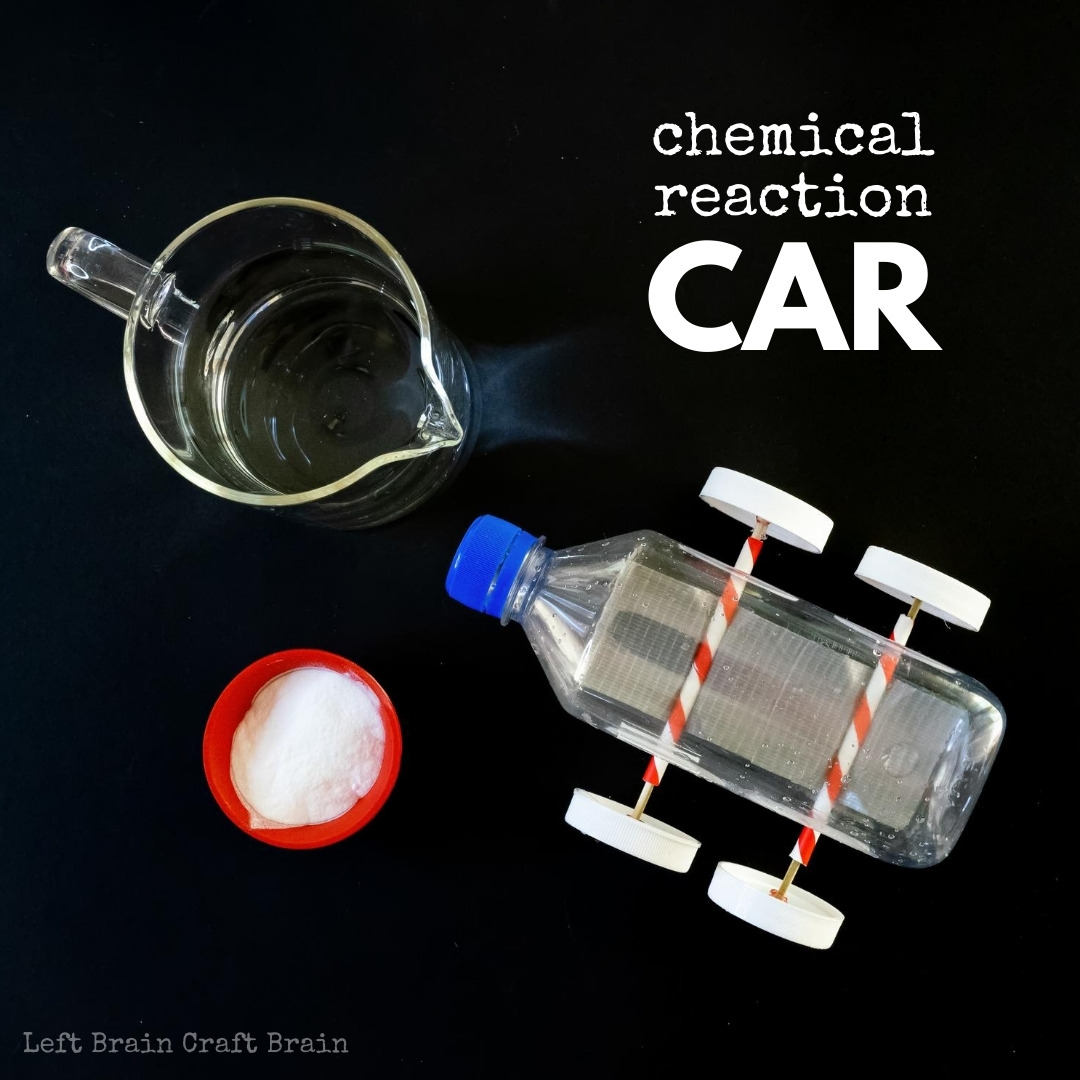
What Makes this Car Go?
This car is an awesome way to see science and engineering in action. First up, you have to build the car using wheels, one of the types of simple machines. Next, your car needs some power! Leave it to a chemical reaction to make it roll. When the baking soda (a base called sodium bicarbonate) and the vinegar (an acid) mix together, they react and release carbon dioxide (CO2). The pressure inside the bottle builds from the CO2 and escapes through the hole in the cap. The force exiting the cap causes an equal and opposite force in the other direction, causing the car to roll.

How Does a Gasoline-Powered Engine Work?
Gasoline-powered cars use chemical reactions too! Your car gets its power thanks to the strength of chemistry and physics! Gasoline-powered engines use something called an internal combustion engine which relies on air compression to make things move. It uses a piston system with air and fuel-filled cylinders called a 4-stroke engine. It undergoes 4 different steps:
1) Intake: The piston moves down, creating a vacuum, and the cylinder fills with air and fuel.
2) Compression: The piston pushes upwards, compressing the contents.
3) Combustion: The contents are sparked and combust (catch fire), causing the gases to expand and push the piston downwards.
4) Exhaust: The exhaust valve opens, the gases escape, and the piston moves upwards.
When the piston moves, it moves the crank shaft which translates up and down motion into a rotational motion for the axle. The more pistons (or cylinders) a car has, the more power the engine gets, and the faster it can drive.
Chemical Reaction Car Supplies
Be sure to get a bunch of baking soda and vinegar for this fun activity. You’ll want to race it over and over again!
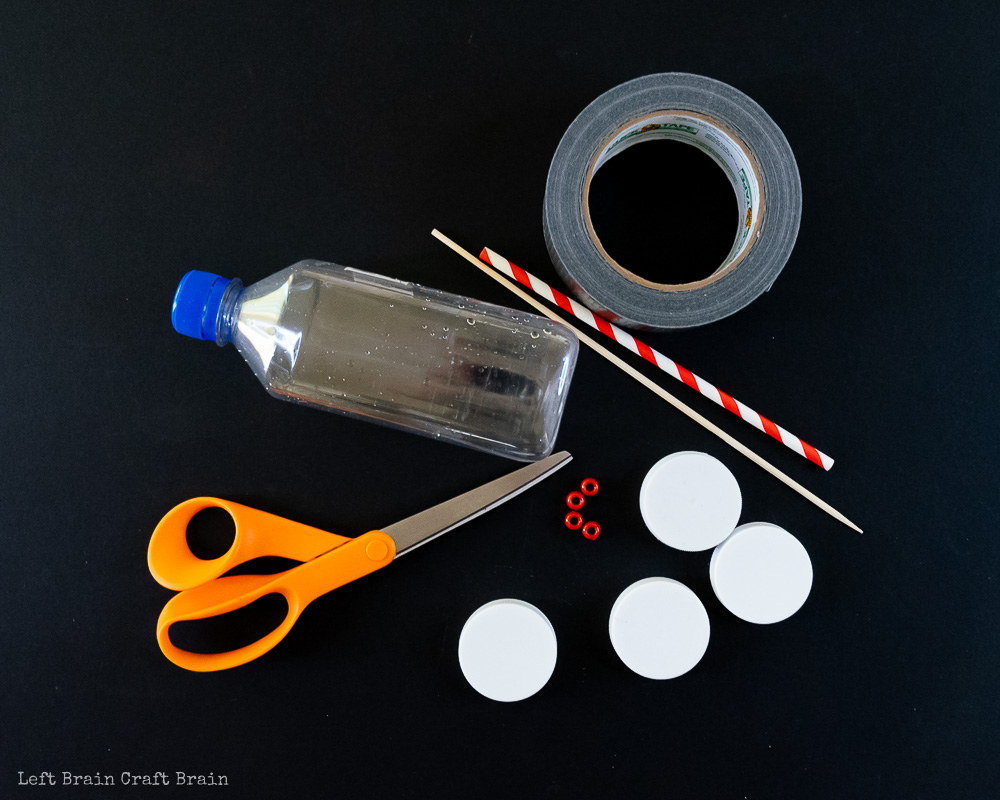
- Water bottle (square one is best)
- 1 straw
- 1 bamboo skewer
- Scissors
- 4 plastic caps
- 4 pony beads
- Glue gun or other glue
- Duct tape
- Vinegar
- Baking soda
- Tissue paper
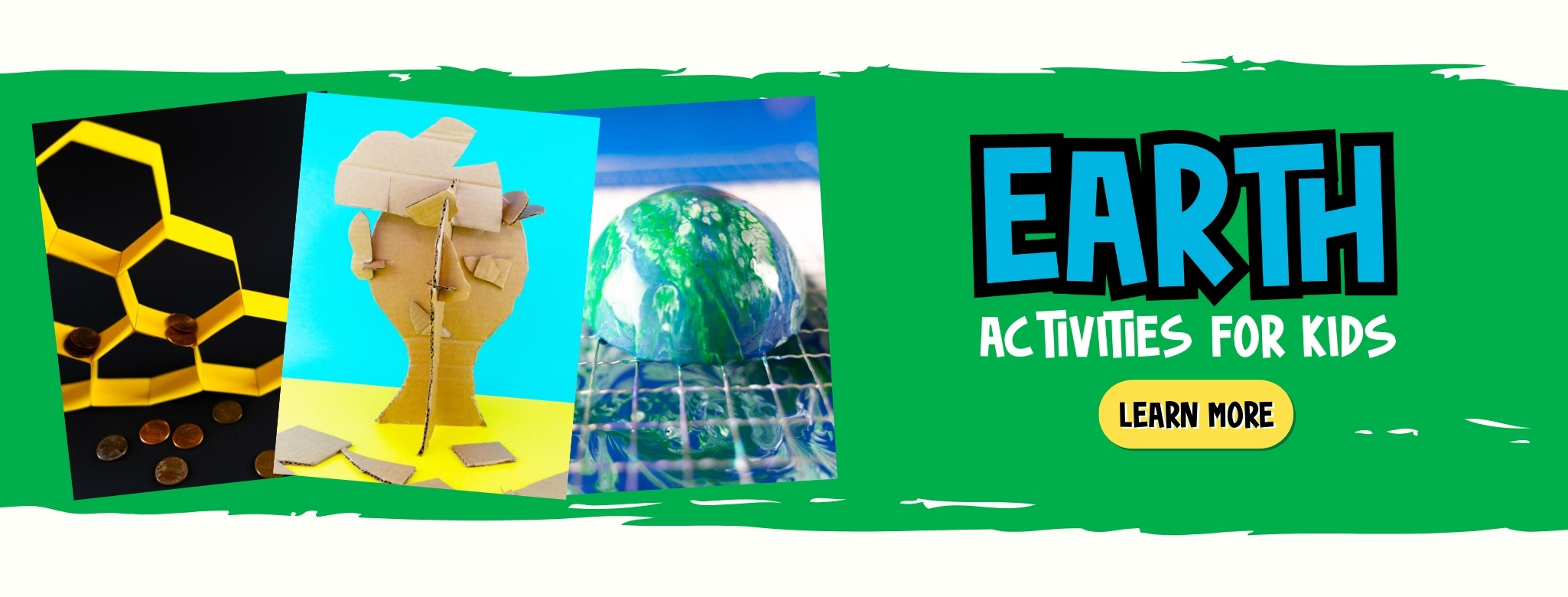
How to Build the Chemical Reaction Car
- Preheat the glue gun. Caution! Glue guns are hot and adult supervision is required! You can use other glue if desired.
- Gently insert the hot tip of the glue gun into the center of the water bottle lid, melting a hole in it.
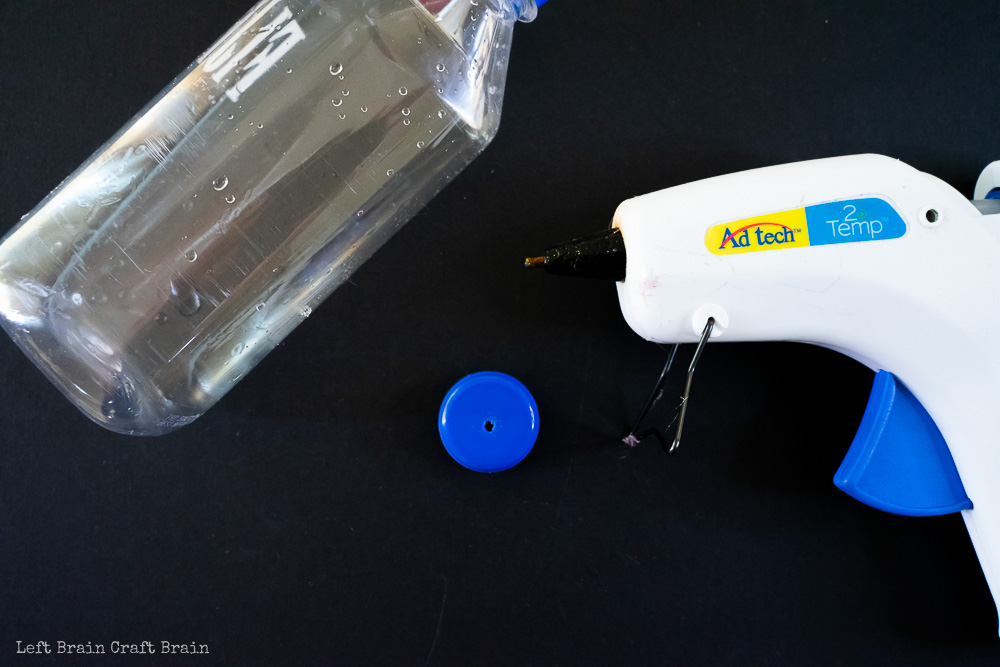
- Cut the paper straw in half.
- Cut the bamboo skewer with scissors into two pieces, 1 inch longer than the straw pieces.
- For each wheel, glue a pony bead into the center of the inside of the wheel.
- Put some glue into the middle of the pony bead and insert one end of the bamboo skewer.
- Insert the bamboo skewer into the paper straw and glue the other end of the bamboo skewer into another wheel.
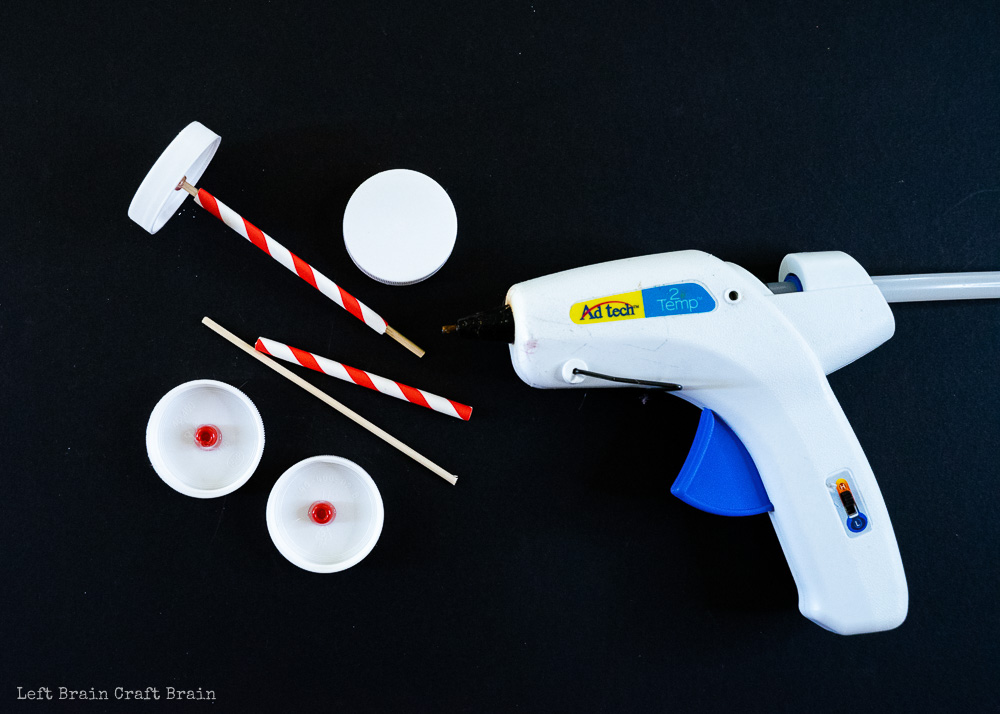
- Repeat steps 6 and 7 with the second axle.
- Duct tape the two paper straws to the bottle like axles.
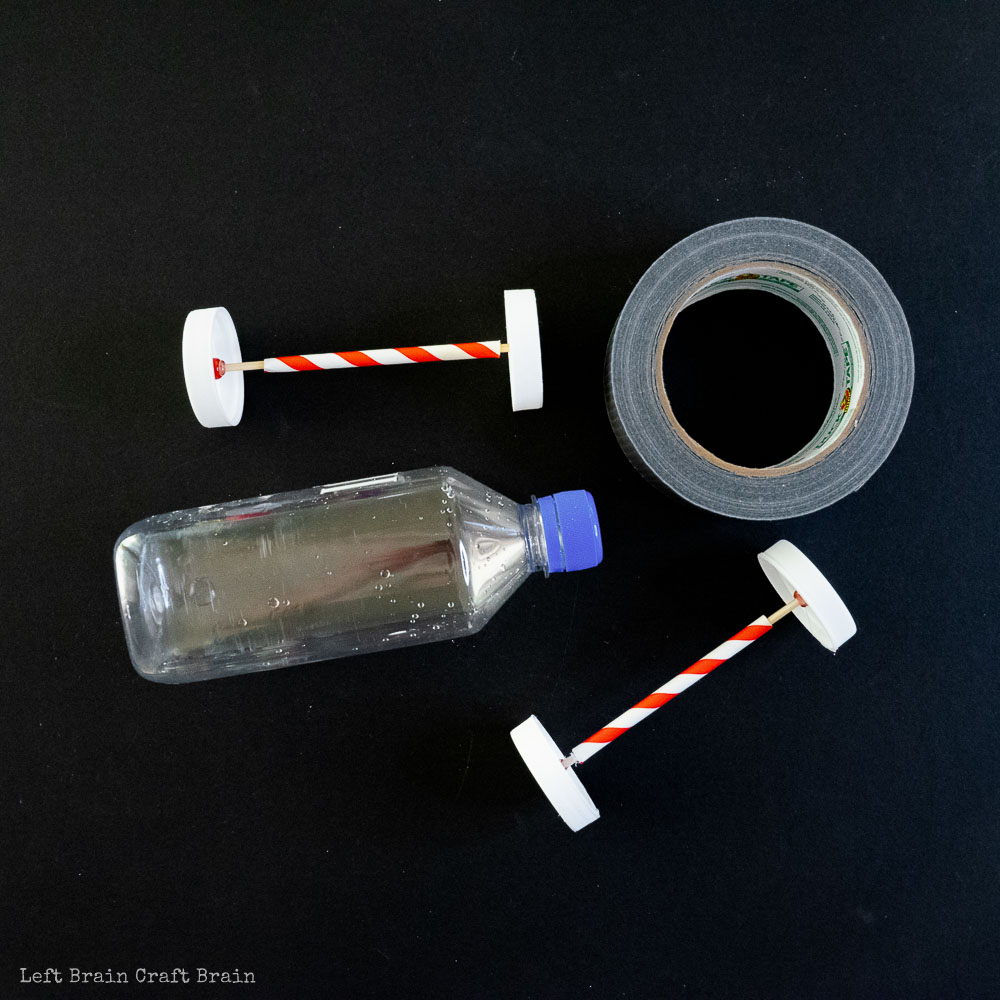
- Duct tape the two paper straws to the bottle like axles.
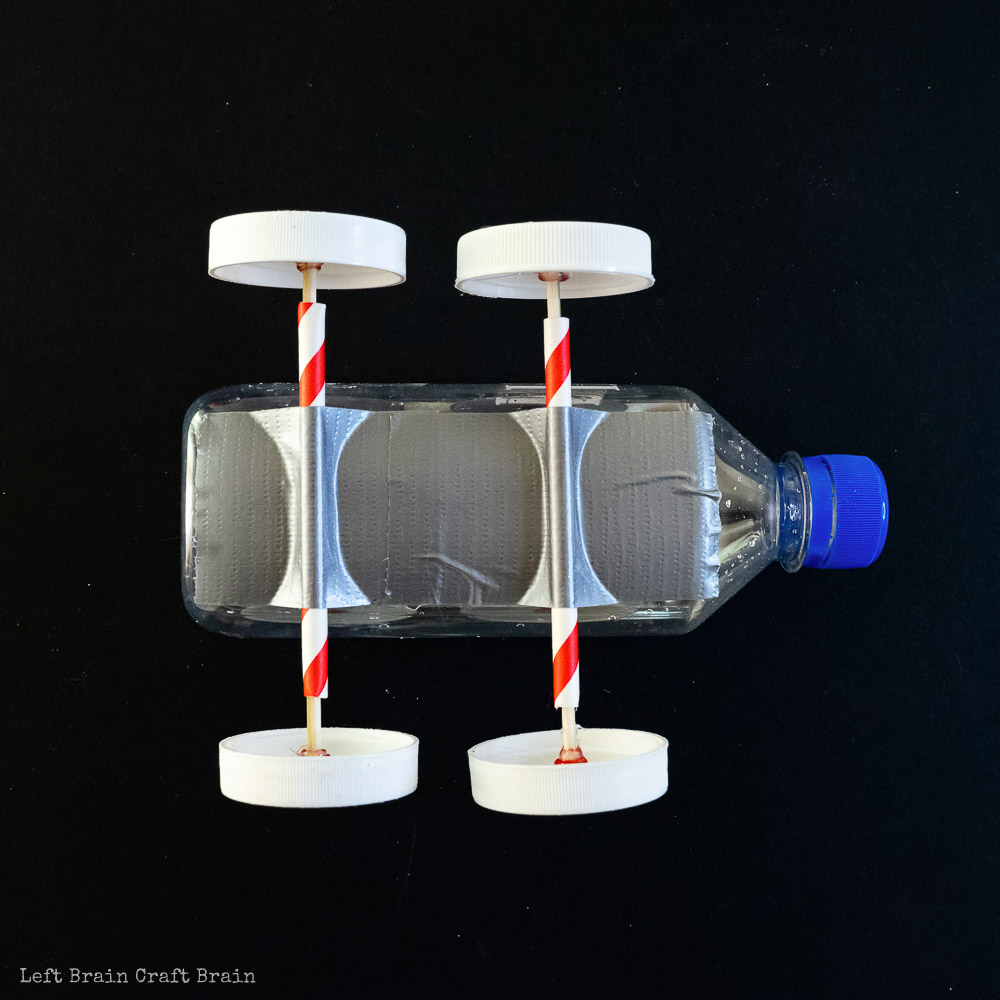
Watch the Chemical Reaction Car in Action!
Be sure to watch this assembly and racing video. There are a bunch of tips and tricks to make it a successful activity session.
How to Race the Chemical Reaction Car
Be sure to take this OUTSIDE! It gets messy. Also, racing the car involves a lot of trial and error, so be prepared for the fun of success AND failure.
- Twist open the water bottle and pour 1 cup of vinegar into the water bottle.
- Cut a 5”x4” rectangle of tissue paper and pour in 1 tablespoon of baking soda. Roll up and fold the ends so the baking soda doesn’t fall out.
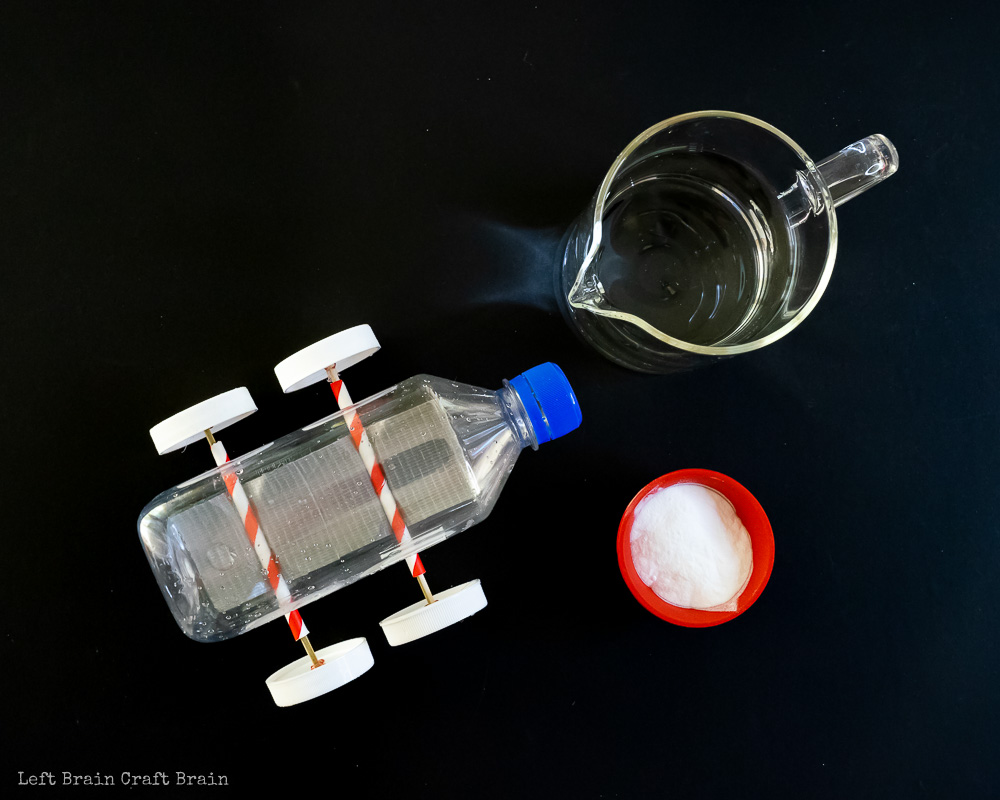
- Now head outside!
- Place the bottle upright and QUICKLY! insert the baking soda package into the bottle and close the cap.
- Shake the bottle and place the car wheels on the ground.
- Let it ride!
- watch the video for troubleshooting tips and tricks!
Fun Ways to Take This Project Further
- Can you design a tool that helps add the baking soda faster?
- Conduct an experiment to find the best ratio of vinegar to baking soda. Measure the distance the car travels, the time it travels, the direction it travels, and compare the results.
- Can you make your car more aerodynamic to make it travel further? Try adding fins or other features and test.
More Learning Fun Kids Love!
This chemical reaction car is a sneak peek into our Earth STEAM Explorers ebook! Kids will love learning about our planet and environment with gravity painting, honeybee geometry, flower art projects, earth snacks, and more! You’ll love the standards-based hands-on learning and easy-to-use printables.

Different STEAM Fun Every Month
Looking for some more STEAM inspiration that you can use right now? Instant gratification style? Check out STEAM Explorers!! The coolest creative experience for kids is here! It's a digital book of the month club filled with tons of fun stuff for the kids to do and learn. All engineer, teacher, and mom-approved. And most definitely KID APPROVED!
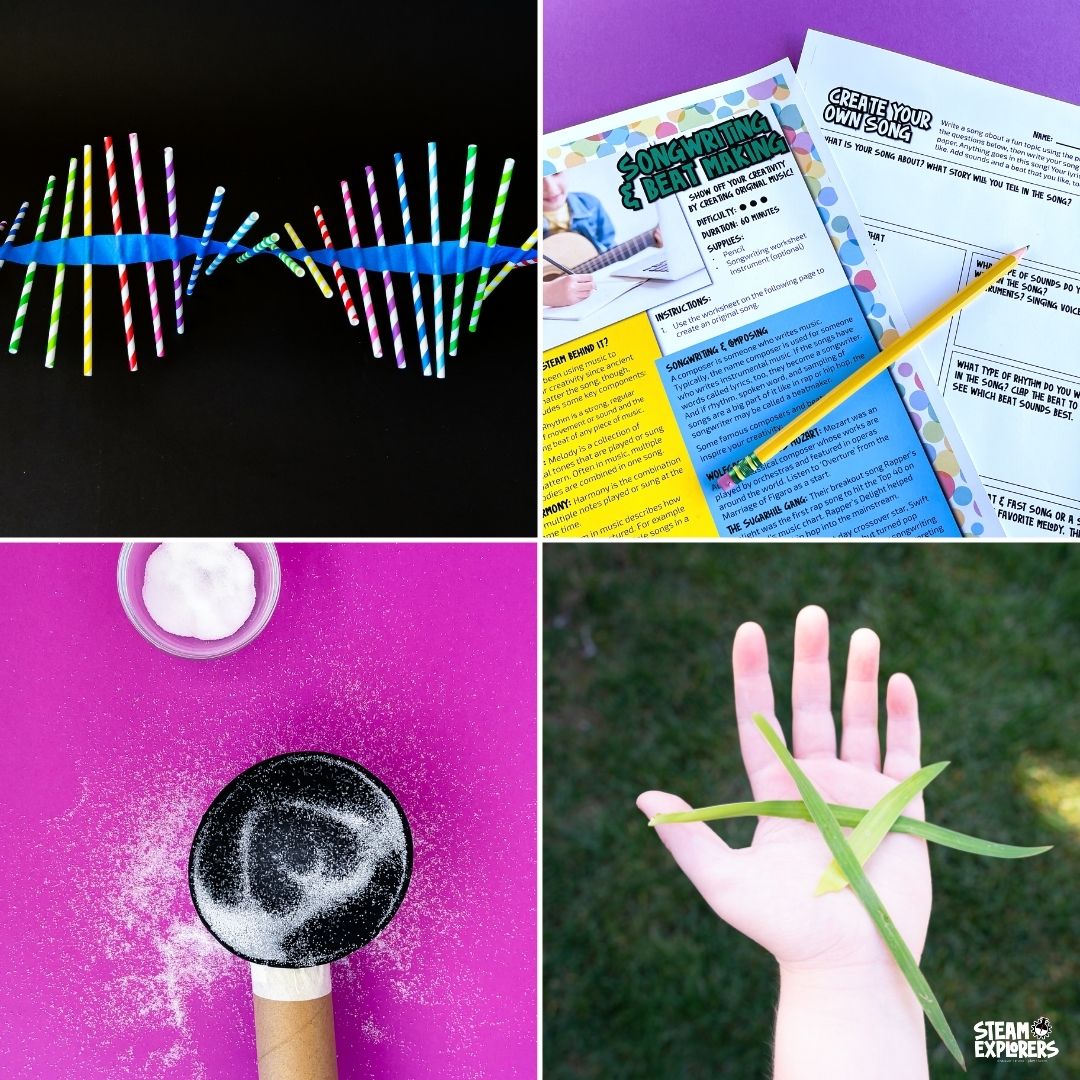
What’s included?
- A monthly digital magazine with cool themes that are fun to read
- Hands-on, exciting projects the kids will love.
- Science, tech, engineering, art, and math learning YOU’LL love.
- Delicious recipes the kids can make.
- Fun printables and games
Join us as we make some music in March!! All in the name of having fun with STEAM, of course. We’re exploring sound waves and animal ears and of course, music through hands-on projects the kids will love. The kids will love creating their own rhythms, testing sound with spoons, seeing sound waves with salt, amping up their ear power with paper, and so much more! You’ll love the helpful standards-based learning, printables, and tools that make STEAM exploration easy!
We’ve split the issue into four weekly themes:
- This issue has four weekly themes to inspire your kiddos:
- WEEK 1: MAKING NOISE
- WEEK 2: SEEING SOUND
- WEEK 3: HEARING NATURE
- WEEK 4: CREATING MUSIC
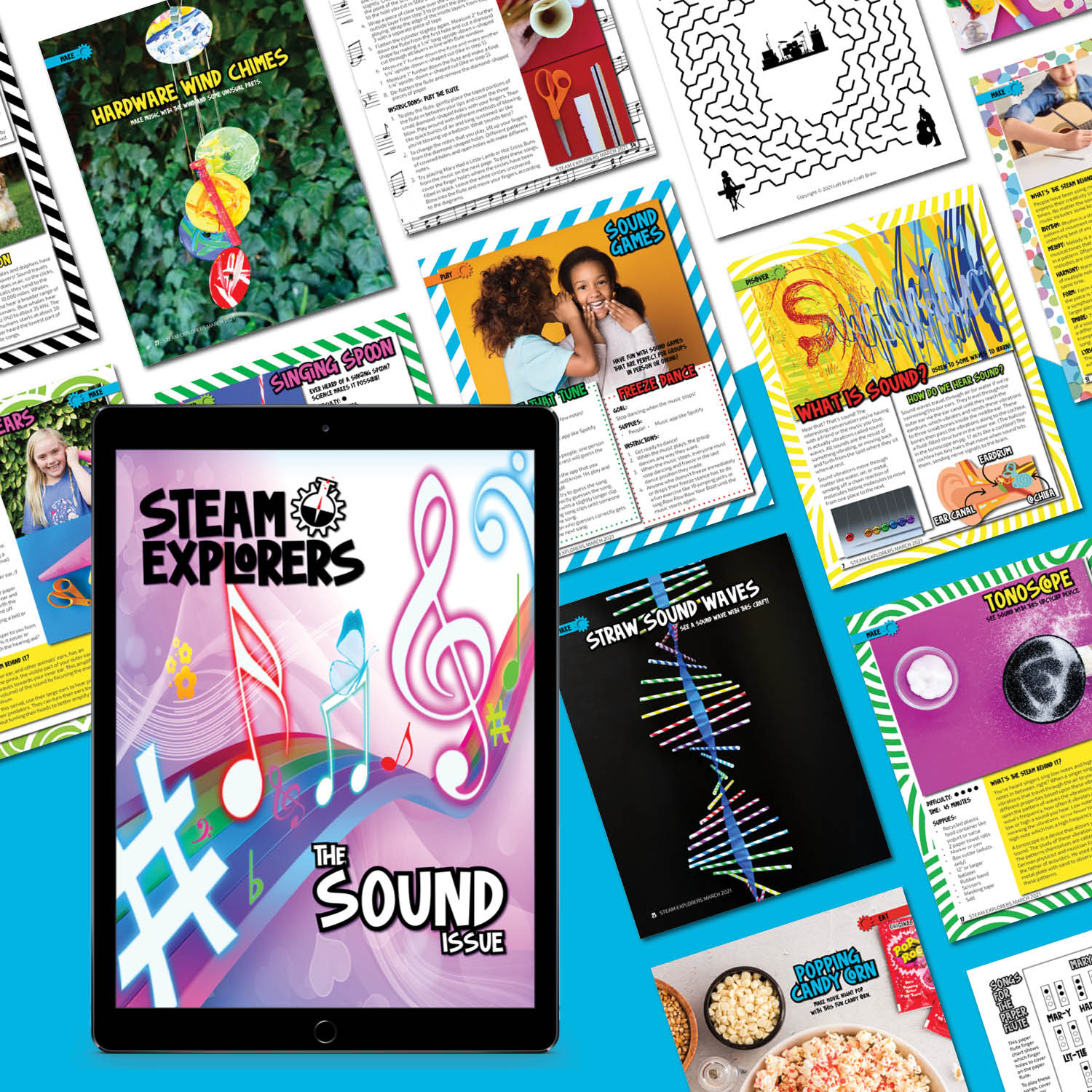

More Fun Engineering Projects!
Do your kids love building? Check out this amazing resource filled with a whopping 50+ Engineering Projects for Kids.
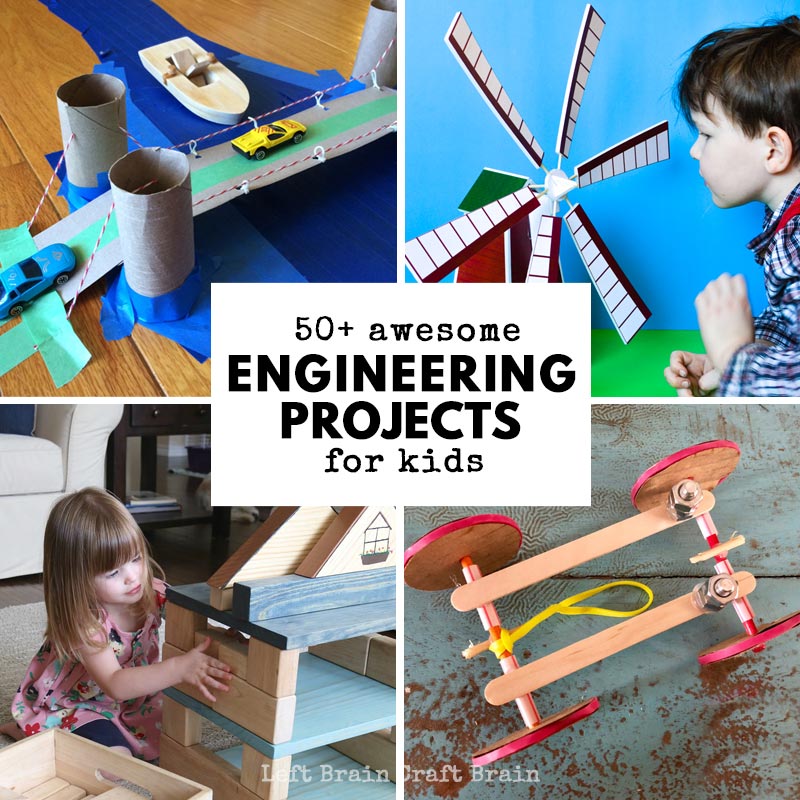
How to Build a Balloon Car – Kids love engineering their own air-powered car made from recyclables!
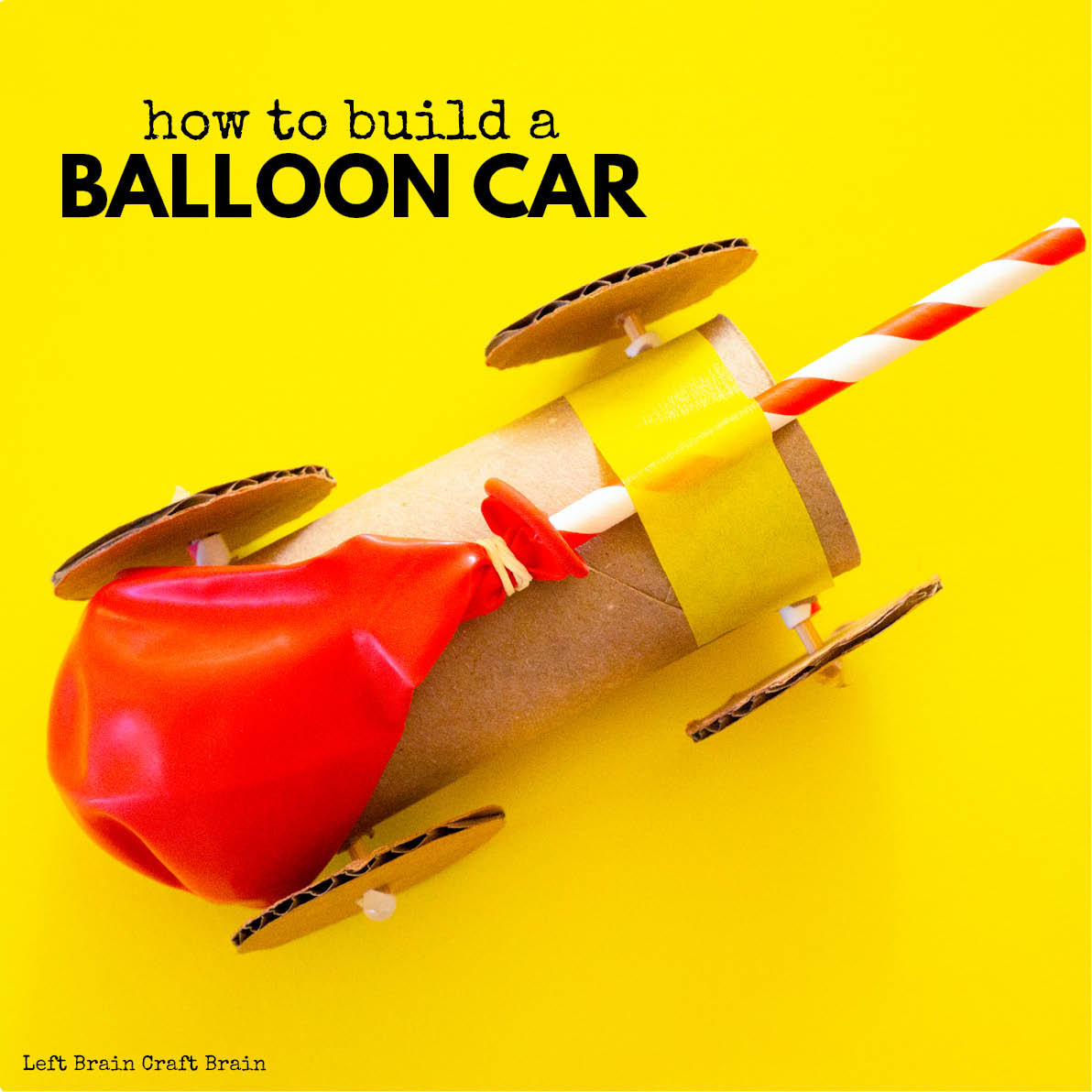
Build a cardboard replica of San Francisco’s Golden Gate Bridge with this DIY Suspension Bridge.
